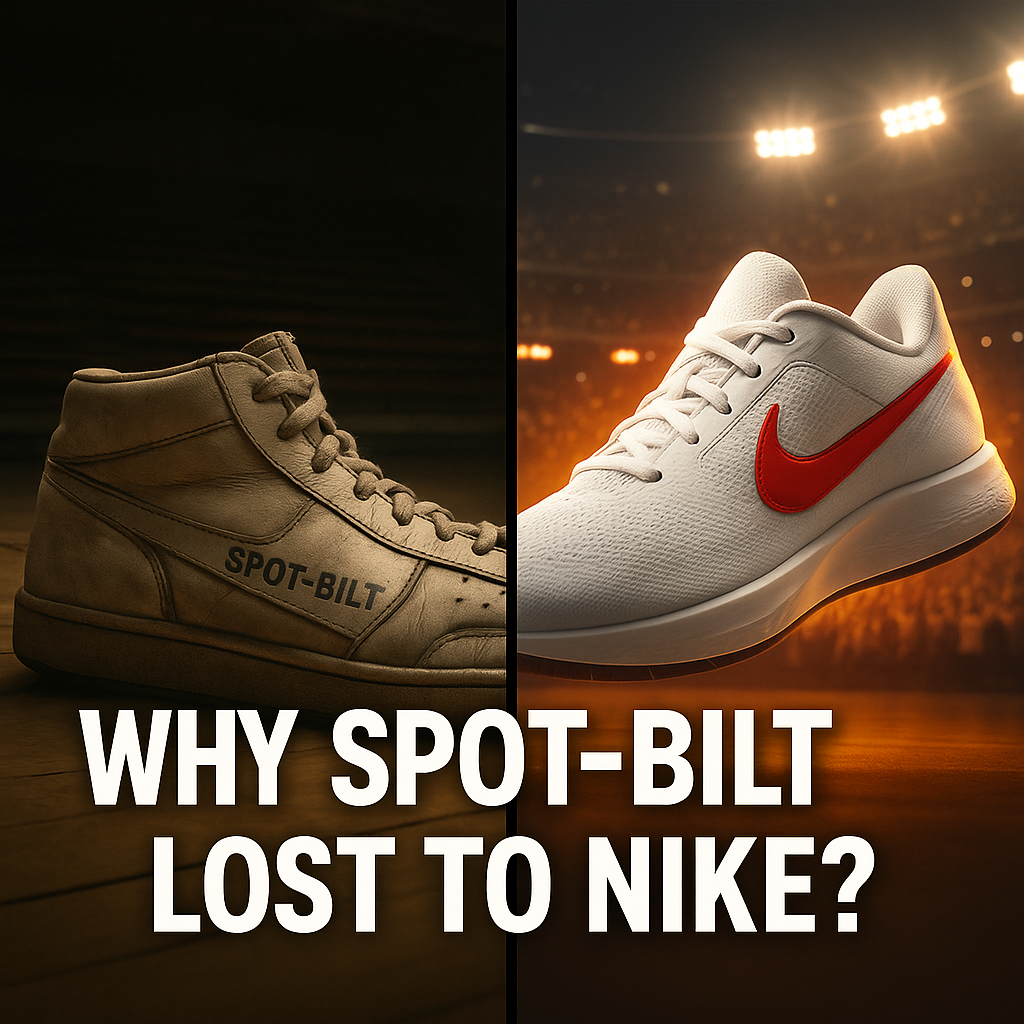In the pantheon of athletic footwear, Nike stands as a colossus, synonymous with performance, style, and powerful storytelling. But in the 1970s and 80s, a now largely forgotten brand—Spot-Bilt—had a real shot at challenging Nike’s dominance. Backed by industry heritage, athletic credibility, and even a brief collaboration with NBA legend Michael Jordan, Spot-Bilt had many of the pieces needed for success. Yet, it failed to capitalize on its potential. Why?
This article explores the key reasons Spot-Bilt couldn’t match Nike’s marketing success—despite having comparable, if not superior, starting ground in some areas.
1. Lack of Bold Branding Vision
Nike’s founders, Phil Knight and Bill Bowerman, were not just selling shoes—they were selling aspiration. The iconic Swoosh logo, the name “Nike” derived from the Greek goddess of victory, and their aggressive branding strategy gave Nike a mythos. Spot-Bilt, by contrast, had a generic name and lacked a cohesive, emotionally resonant brand identity.
Where Nike evoked speed, power, and triumph, Spot-Bilt sounded more like a technical gear company. Their branding failed to inspire.
2. Underwhelming Storytelling
Marketing is not just about selling a product—it’s about telling a compelling story. Nike mastered this art through memorable campaigns such as “Just Do It”, and by weaving the personal narratives of athletes into the identity of the brand.
Spot-Bilt never truly developed such storytelling. Even when the company had Michael Jordan try on and seriously consider signing with them in 1984, they failed to craft a narrative around it. Imagine if Spot-Bilt had backed Jordan and created an equivalent of the “Air Jordan” line. The marketing possibilities were endless—but they let the moment slip.
3. Failure to Capitalize on Celebrity Endorsements
While Nike aggressively pursued high-profile athletes like Michael Jordan, Bo Jackson, and Serena Williams, Spot-Bilt hesitated. Their modest endorsement of NFL coach Dan Reeves and some NFL players never achieved the same cultural resonance as Nike’s high-voltage athlete partnerships.
Endorsements are not just about attaching a name to a product; they are about building a lifestyle and aspirational value around it. Nike understood this; Spot-Bilt did not.
4. Limited Advertising Spend and Innovation
Nike invested heavily in advertising—TV commercials, sponsorships, stadium placements, and eventually internet and viral campaigns. Spot-Bilt lacked the capital, or the marketing vision, to go toe-to-toe with such aggressive strategies.
Where Nike created unforgettable moments—like the 1987 “Revolution” ad using a Beatles song—Spot-Bilt remained in the shadows, relying more on retailer presence and product performance than emotional marketing.
5. Poor Timing and Missed Opportunities
The 1980s were a golden era for sports marketing, and timing was everything. Nike struck while the iron was hot—signing Jordan before his NBA debut, investing in Bo Jackson during the multi-sport athlete craze, and seizing the aerobics and jogging booms.
Spot-Bilt hesitated. The most painful example: Michael Jordan was reportedly offered $100,000 by Spot-Bilt, but Nike blew them out of the water with a $500,000 deal and a revenue share—unheard of at the time. That one decision altered the history of sports branding.
6. Lack of Global Vision
Nike wasn’t just thinking about dominating the U.S. market—they were thinking globally. Their campaigns, logos, and product names were easily adaptable to international markets. Spot-Bilt remained a regional, American-centric brand, never fully stepping into the global arena.
7. No Cultural Penetration
Nike went beyond sports. Their shoes were worn by musicians, skaters, dancers, and everyday youth. Nike was streetwear before streetwear was cool.
Spot-Bilt, on the other hand, remained trapped in the athletic bubble. There was no crossover appeal. No one wore Spot-Bilt shoes to clubs, concerts, or on the streets as a fashion statement.
Final Thoughts
Spot-Bilt’s downfall wasn’t just about marketing budget—it was about vision, boldness, and cultural relevance. They had a solid product and were in the right place at the right time. But they lacked the guts, the storytelling genius, and the foresight to build a global, emotion-driven brand.
In a world where perception often beats product, Nike won the race because they sold more than shoes—they sold a dream. Spot-Bilt merely sold sneakers.
And that made all the difference.

